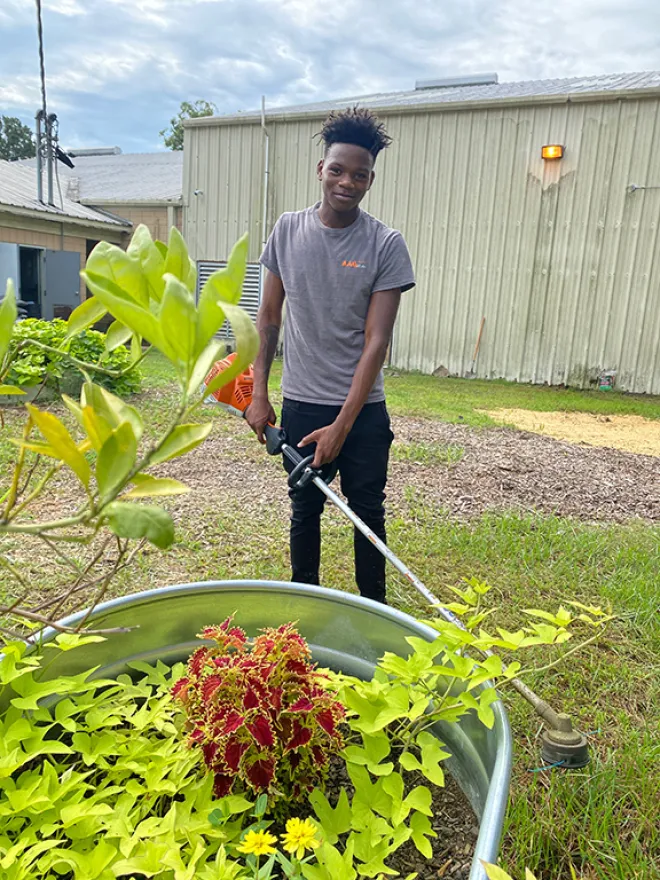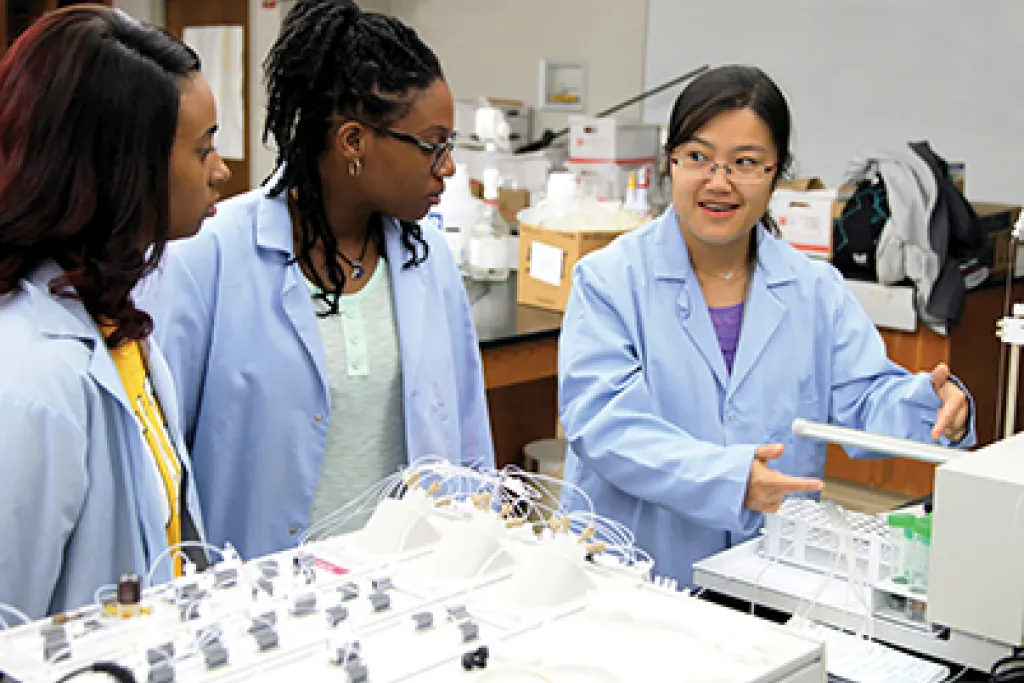The USDA’s National Institute of Food and Agriculture (NIFA) partners with a system of 19 universities known collectively as 1890 Land-grant Universities (LGUs) to provide agricultural research, Extension, and education programs.
A cornerstone NIFA program designed to strengthen the capacity of 1890 LGUs is the 1890 Capacity-building Grants (CBG) program. This program awards grants annually that address key problems of national, regional and multi-institutional importance in sustaining all components of agriculture, including farm efficiency and profitability; ranching; renewable energy; forestry (both urban and agroforestry); aquaculture; rural communities and entrepreneurship; human nutrition; food safety; family and consumer sciences; biotechnology; and conventional breeding. Authorized in the 1996 Farm Bill, funds were first appropriated in 1997. This month, 1890 LGUs will submit their latest round of funding applications, marking 25 years of the CBG program.

The term 1890 LGU derives from the 1890 passing of the second Morrill Act. In 1862, President Abraham Lincoln signed into law the first Morrill Act, which granted land to states for the purpose of establishing institutions of higher education that focused on teaching military tactics, engineering and agriculture. Then in 1890, the second Morrill Act was passed which focused on providing educational opportunities specifically to African Americans. Today, NIFA supports this collective of Historically Black Universities with initiatives like the 1890 CBG program, intended to strengthen research, Extension and teaching in the food and agricultural sciences by building the institutional capacities of the 1890 Institutions.
The 1890 CBG program supports projects that strengthen teaching programs in the food and agricultural sciences in the areas of curriculum design and materials development, faculty development, and others. CBG supports projects that strengthen research and Extension programs in areas of studies and experimentation, Extension program development support systems, and others. The CBG also support integrated project grants.
These funds have impacted those served by the 1890 LGU system for decades. Check out these recent examples of CBG-funded research, Extension and education projects:
- Ongoing research at Fort Valley State University (FVSU) in Georgia revealed that peanut skins could lead to better health and sustainability. Results showed that this low-value byproduct and precursor of vitamin E increases the concentration of antioxidants in lean meat after a team of scientists and students studied 33 male lambs. Antioxidants are a good source to help strengthen the immune system to fight infections and diseases. Based on FVSU's findings, peanut skins consumed by small ruminants such as sheep and goats could benefit the health of humans who consume this meat.
- North Carolina A&T State University is helping middle and high school students develop soft skills while exposing them to different science, technology, engineering, and mathematics (STEM) careers. Called “You’re Hired,” the program provides a unique blend of teacher-led activities, virtual training and small group activities to support the development of soft skills in youths. Program modules focus on personal branding, communication, conflict resolution, customer service, responsibility and time management. It has been used with youths in limited-resource counties, and 4-H staff members are currently working to transition the program to an online format to reach more teens.
- Southern University in Louisiana is providing agricultural training to recently released, adjudicated and homeless youths. Through classroom instruction and hands-on activities, including the establishment of horticultural garden plots, participants receive workforce training in vegetable gardening, landscape installation, landscape maintenance, lawn service, marketing, interpersonal skills and an introduction to the many possibilities for careers in agriculture. Upon successful completion of the program, certificates are awarded and can be utilized to support applications at any horticulturally related establishment to obtain gainful employment.
- Researchers at the University of Arkansas at Pine Bluff are studying the unique features of biochar made from animal byproducts to optimize its manufacture methods and desired functions. The goal of the project is to develop a cost-effective method for livestock farmers to convert various plant residues and animal byproducts to value-added biochar products. This research focuses on raw materials that are abundantly found in local agricultural waste and not widely reused. Specifically, UAPB researchers are converting rice husks, cotton wood, tree bark, shrimp shells and chicken feathers into biochar. Biochar already has a long history of use as a soil amendment in agriculture. However, UAPB research will lead to the creation of products that also remove pollutants from runoff and other agricultural processes to ensure better sustainability in agriculture. Eventually the product could be a cost-effective, multifunctional agent to not only increase soil fertility, but also prevent environmental pollution.
- West Virginia State University (WVSU) Healthy Grandfamilies started in 2015 as a collaboration between WVSU Extension Service and the university’s Department of Social Work as an education and support program for grandparents who are raising their grandchildren. The pilot project kicked off in 2016 with 125 grandparents completing the program, learning about such issues as 21st century parenting, navigating the school and legal systems, and social media. Because the pilot program was able to demonstrate positive effects and ease of replication, Healthy Grandfamilies is now a statewide initiative serving all 55 counties in the state and has helped more than 1,000 participants to date, culminating in a recently held statewide conference.

The 1890 CBG program is one of several NIFA initiatives targeting the 1890 LGUs. Learn more about NIFA’s 1890 LGU programs on the website.
Top image: Dr. Hao Chen (right), assistant professor for the University of Arkansas Pine Bluff Department of Agriculture, is part of a team studying the unique features of biochar made from animal byproducts to optimize its manufacture methods and desired functions. Photo courtesy of University of Arkansas Pine Bluff.

